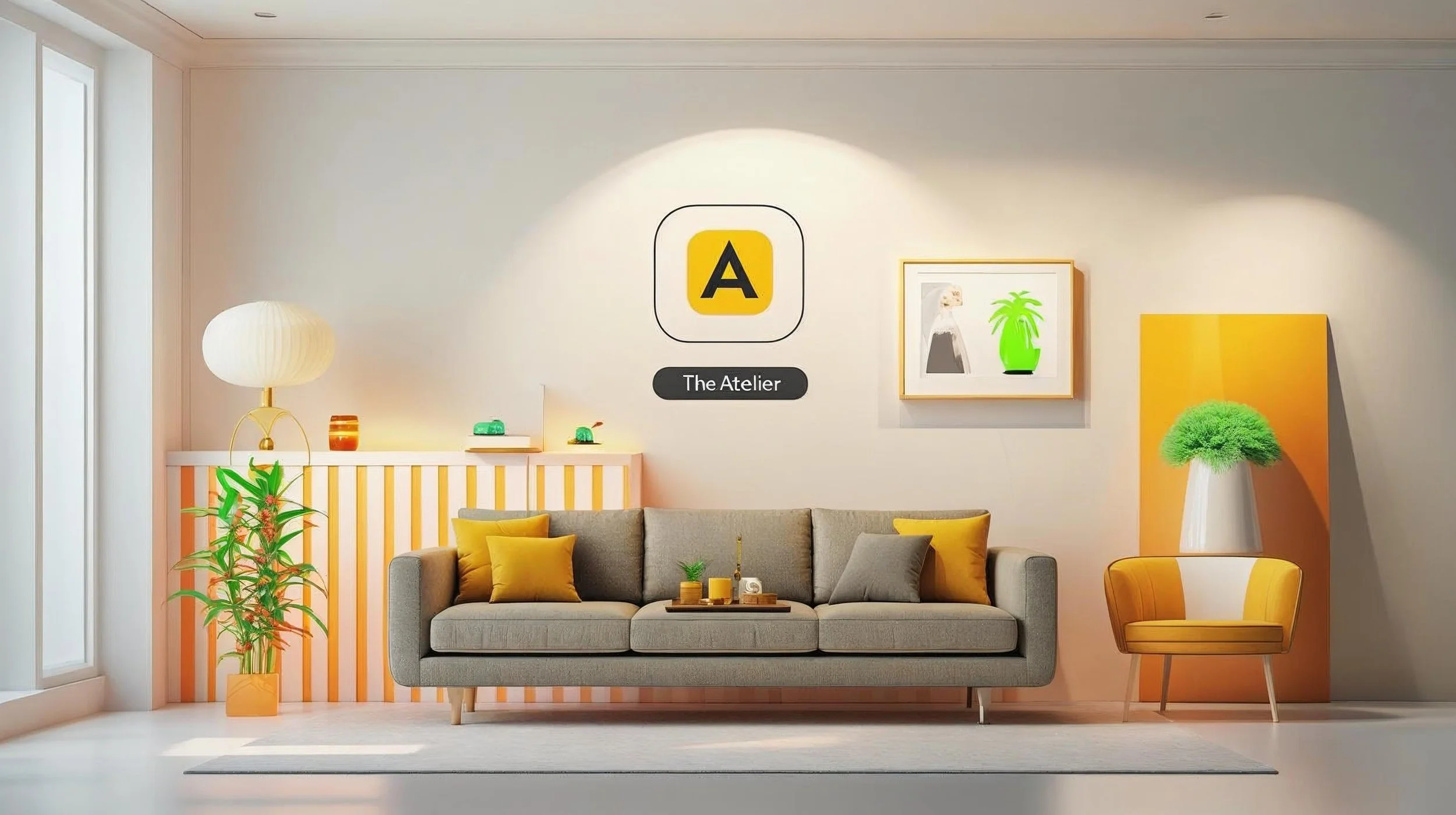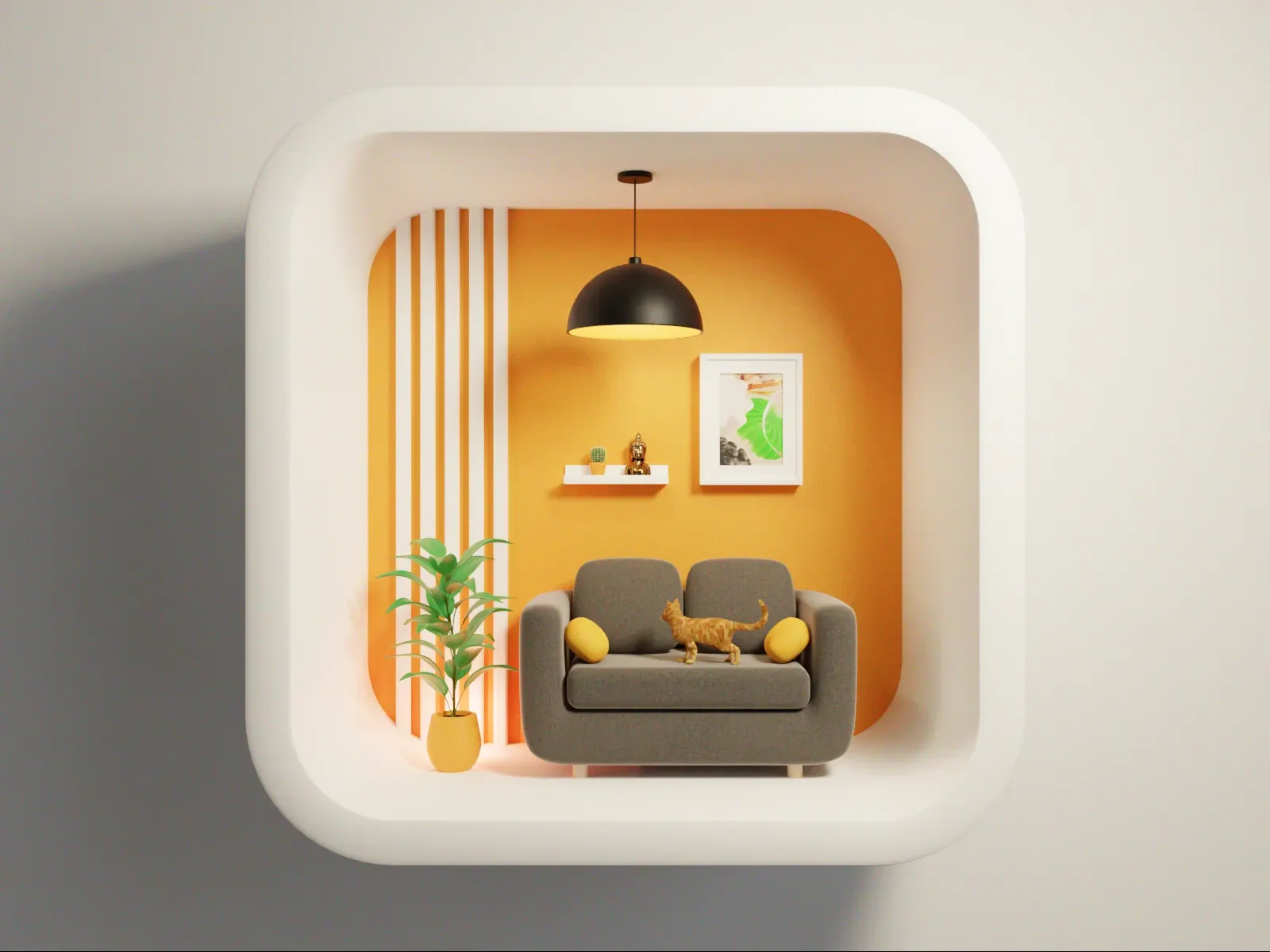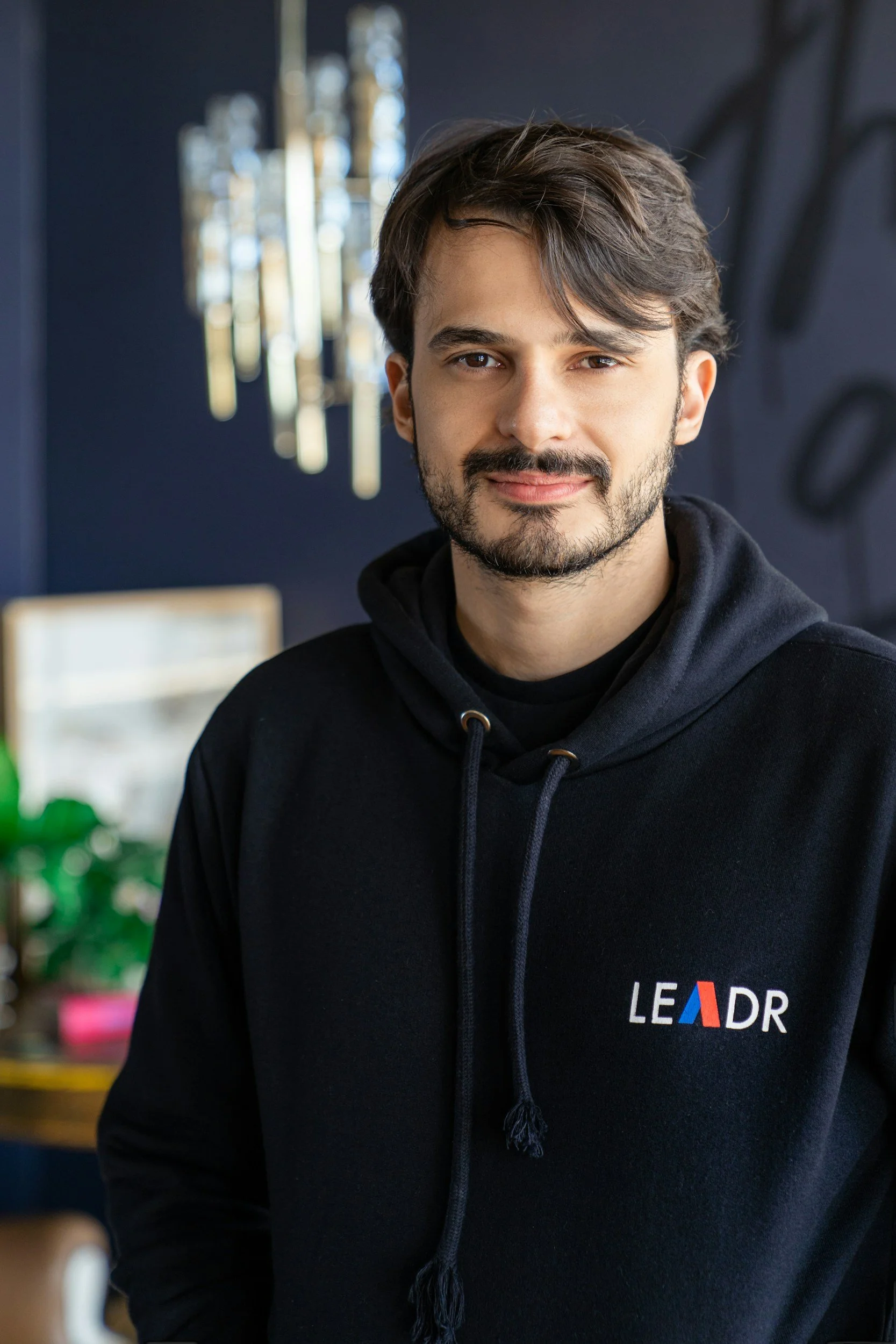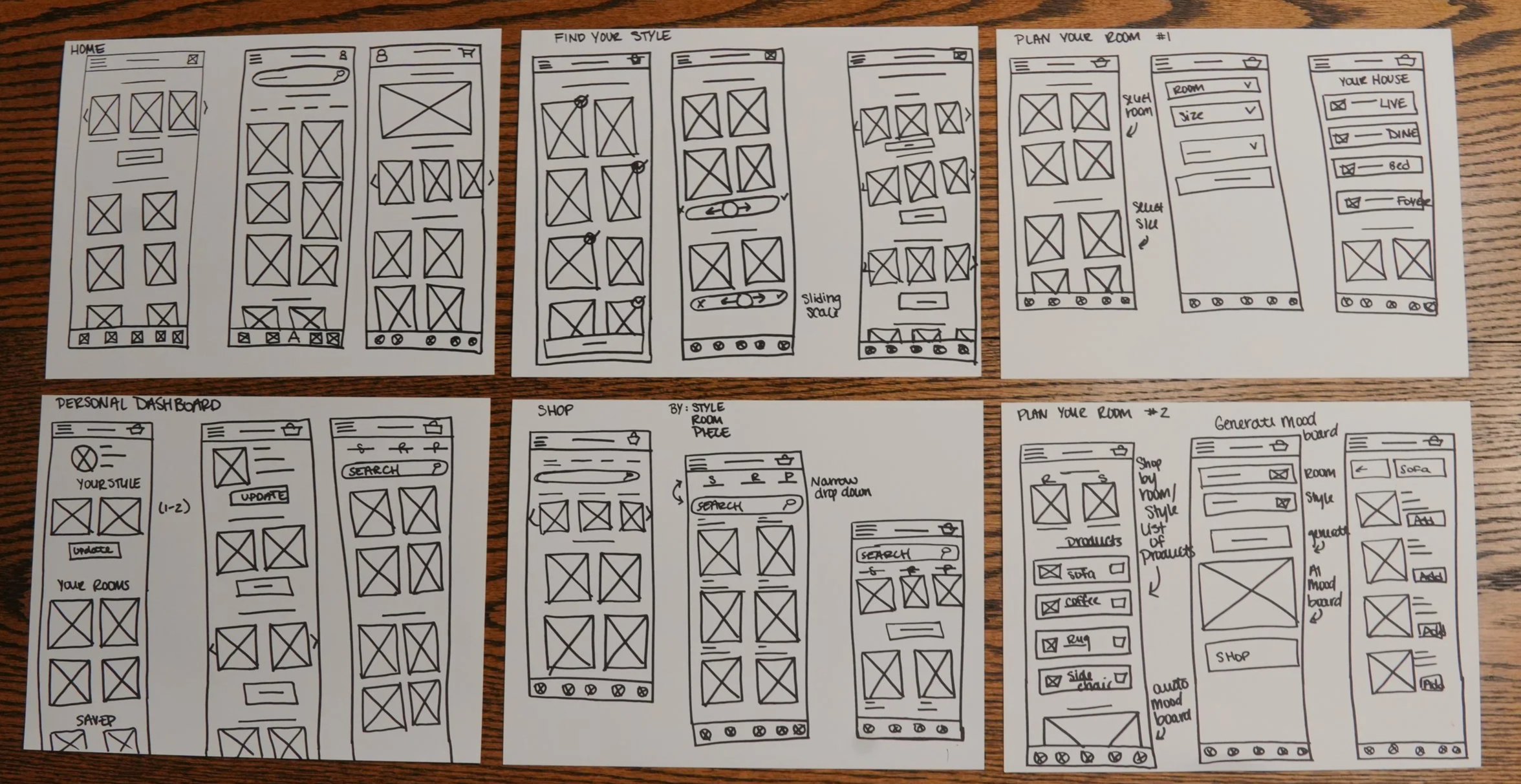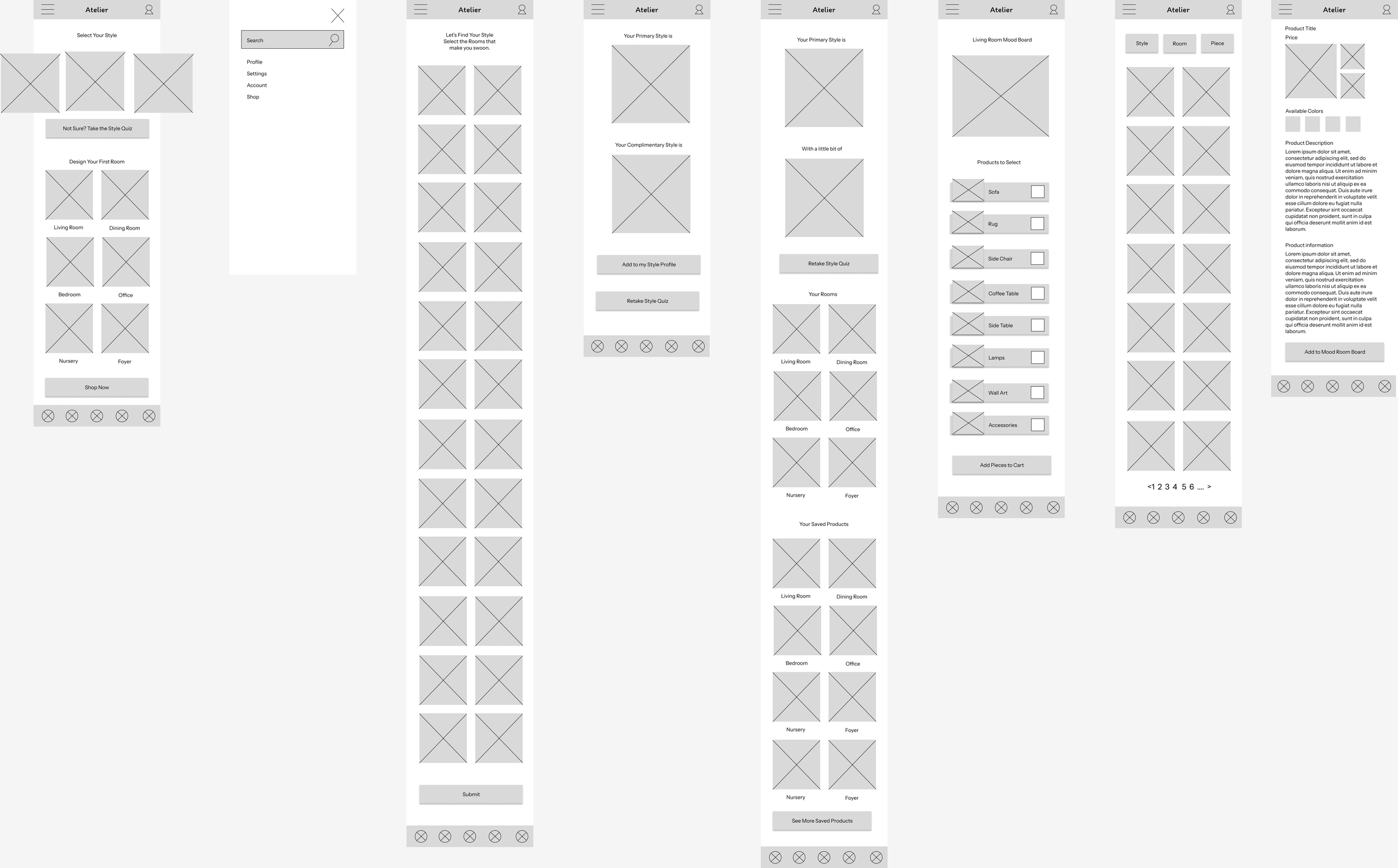Product: Interior Design App
Duration: Aug 2025
Role: UX/UI Designer
Product
Atelier is a mobile app concept that simplifies interior design for the everyday person. It helps users identify their personal style, visualize it within their own spaces, and discover curated products that align with that style. By blending inspiration with practical application, Atelier empowers users to make design decisions confidently—bridging the gap between aspiration and execution.
Problem
Interior design often feels overwhelming and inaccessible to the average person. Many people know what they like when they see it, but they struggle to define their style or translate inspiration into cohesive, real-world design decisions. While there are countless sources of design inspiration (Pinterest, Instagram, magazines), they can feel fragmented, unrealistic, or too aspirational. Users need a way to cut through the noise and connect inspiration directly to actionable solutions in their own homes.
Goal
The goal of Atelier was to create an approachable, user-friendly app that demystifies interior design. The app needed to guide users through identifying their personal design style, provide tailored recommendations for their space, and make it simple to shop for products that align with their vision. Ultimately, the project aimed to empower everyday users to feel confident in designing their homes without needing professional help or advanced design knowledge.
Empathy: Identifying the user & Their Pain Points
Alex, The Young Professional
Age: 29
Occupation: Software Engineer
Lifestyle: Lives alone in a downtown apartment, works long hours but values a relaxing, stylish home. Enjoys having friends over for game nights and dinners.
Goals: Wants his apartment to feel modern, polished, and “grown up,” but doesn’t have time to fuss over design choices.
Frustrations: Feels lost trying to match furniture styles, often buys random pieces online that don’t look cohesive together. Gets overwhelmed by too many choices.
Needs: A simple, guided way to define his style and quickly pull together a curated look for his apartment without wasting time or money.
Maya, The Young Parent
Age: 34
Occupation: HR Manager
Lifestyle: Lives in the suburbs with her partner and two kids (ages 3 and 6). Home is the hub of family activity.
Goals: Wants a warm, family-friendly living room that balances style with functionality. Needs durable, safe furniture but still craves a home that feels beautiful.
Frustrations: Big-box stores feel overwhelming; Pinterest boards look unattainable. She’s short on time and struggles to create a cohesive look while juggling family life.
Needs: Design support that prioritizes family needs without sacrificing style. Easy product recommendations that fit her budget and lifestyle.
Sophia, The Aspirational Creative
Age: 23
Occupation: Freelance Photographer
Lifestyle: First-time renter in a loft studio. Loves art, fashion, and design inspiration but doesn’t have formal knowledge of interior design.
Goals: Wants her space to reflect her personality and creativity while also serving as an inspiring backdrop for her photography work.
Frustrations: Has plenty of ideas but struggles to make her space look intentional rather than mismatched. Gets stuck choosing between too many options.
Needs: A way to uncover her design style, get clear guidance, and curate pieces that help her home feel cohesive and “Instagram-worthy.”
Difficulty defining personal style – Many people know what they like when they see it, but struggle to articulate or translate that into cohesive design choices for their own space.
Overwhelm from too many choices – Users feel paralyzed by the endless options online and in stores, making it difficult to narrow down decisions.
Fragmented inspiration sources – Platforms like Pinterest and Instagram provide ideas, but they often feel unattainable, unrealistic, or disconnected from actual products users can buy.
Lack of confidence in design decisions – Users fear wasting money on pieces that won’t work together or won’t fit their lifestyle, leading to hesitation and unfinished spaces.
Objectives
Simplify interior design for everyday people by making the process approachable and intuitive.
Help users define their personal style through guided discovery rather than guesswork.
Bridge the gap between inspiration and action by connecting style ideas to real, purchasable products.
Build user confidence in their design decisions so they can create cohesive spaces without professional help.
How Might We Statements
How might we make interior design feel less overwhelming by narrowing down choices and curating options?
How might we help users clearly identify their personal style in a fun, approachable way?
How might we connect aspirational inspiration (Pinterest/Instagram) to actionable solutions that work in real homes?
How might we give users the confidence to make design decisions without worrying they’ll “get it wrong”?
Our app, Atelier, will let users identify their personal interior design style, visualize it in their own space, and shop curated product recommendations, which will affect everyday people who feel overwhelmed by interior design by giving them confidence and clarity in creating cohesive spaces. We will measure effectiveness by tracking user engagement with the style quiz, product recommendations saved or purchased, and user satisfaction ratings within the app.
Alex is a busy software engineer living alone in the city who needs a simple way to create a polished, cohesive apartment because he feels overwhelmed by too many furniture options and lacks the time to figure out interior design on his own.
Maya is a suburban mom of two who needs guidance on designing a family-friendly yet stylish living space because she struggles to balance durability, budget, and aesthetics while managing a busy household.
Sophia is a young creative renter who needs help discovering her design identity and curating pieces that reflect her style because she feels her home looks mismatched and doesn’t fully represent her personality or vision.
Ideate
During the ideation phase, I began by sketching paper wireframes to quickly explore layout options and map out user flows without getting caught up in details. This allowed me to test different ideas rapidly and decide which elements best supported the user journey. Once I had clarity on the structure, I moved into Figma to create digital wireframes, refining the designs with more precision and preparing them for prototyping & usability testing.
While creating the digital wireframes in Figma, I realized additional needs for the product and uncovered pages I hadn’t considered during the paper wireframing phase. Moving into Figma gave me a clearer view of the user flow and helped refine the app structure to better support the user journey.
Prototype
After creating digital wireframes in Figma, I connected them into a low-fidelity prototype to simulate the core user flows. This prototype focused on the most important tasks: taking the style quiz, receiving personalized results, and browsing curated product recommendations. By keeping the prototype simple, I was able to test functionality and flow without being distracted by high-fidelity visuals at this stage.
Test
To validate the design decisions, I wrote a moderated usability study plan to observe real users interacting with the prototype. The study was designed to uncover pain points in navigation, clarity of instructions, and overall ease of use.
Study Plan Overview:
Method: Moderated usability study (remote or in-person)
Participants: 5 users representing the target personas (young professional, young parent, creative renter)
Tasks:
Complete the style quiz and view results.
Browse product recommendations based on the quiz outcome.
Save or “favorite” an item to revisit later.
Share general impressions of how confident they felt making design decisions within the app.
Goals:
Determine if users can easily navigate through the quiz.
Identify if quiz results feel accurate and helpful.
Test whether the curated product recommendations feel cohesive and actionable.
Assess whether users feel more confident in their design decisions after using the prototype.
Measures of Success:
Task completion rates.
Time on task.
User feedback and comments during the session.
Observed areas of confusion or hesitation.
Takeaways
Key Takeaways
Designing Atelier taught me how to approach a complex, overwhelming user challenge (interior design) and break it down into a guided, approachable experience.
Developing user personas and problem statements clarified the real-world struggles of different audiences and kept the design focused on their needs.
The process highlighted the importance of bridging inspiration with action—users don’t just want pretty ideas, they need clear, actionable steps to bring those ideas into their homes.
I gained valuable experience in aligning design decisions with business goals (converting inspiration into shoppable products) while keeping the user journey simple and intuitive.
This project reinforced the value of iteration—each design choice was tested against whether it reduced overwhelm, built confidence, and made the process more seamless for users.
Next Steps
Prototype testing: Conduct usability testing with target users (young professionals, parents, and creatives) to validate the flow of the style quiz, product recommendations, and shopping experience.
Expand functionality: Explore adding features like AR room previews, budget filters, and “moodboard to shopping list” tools to further simplify the design-to-purchase journey.
Partnership opportunities: Research potential collaborations with furniture retailers or e-commerce platforms to connect curated product recommendations directly to purchasing options.
Iterate on design: Use testing feedback to refine UI elements, reduce cognitive load, and ensure the app feels welcoming and empowering for everyday users.
